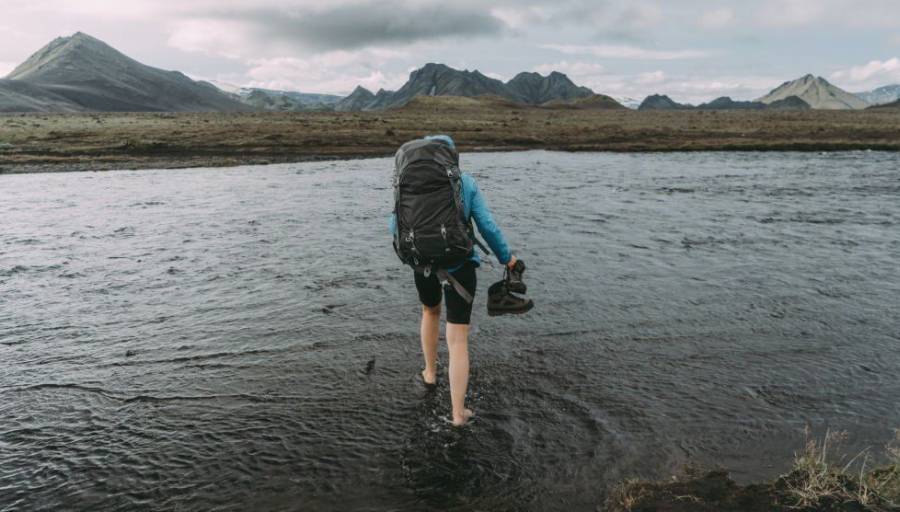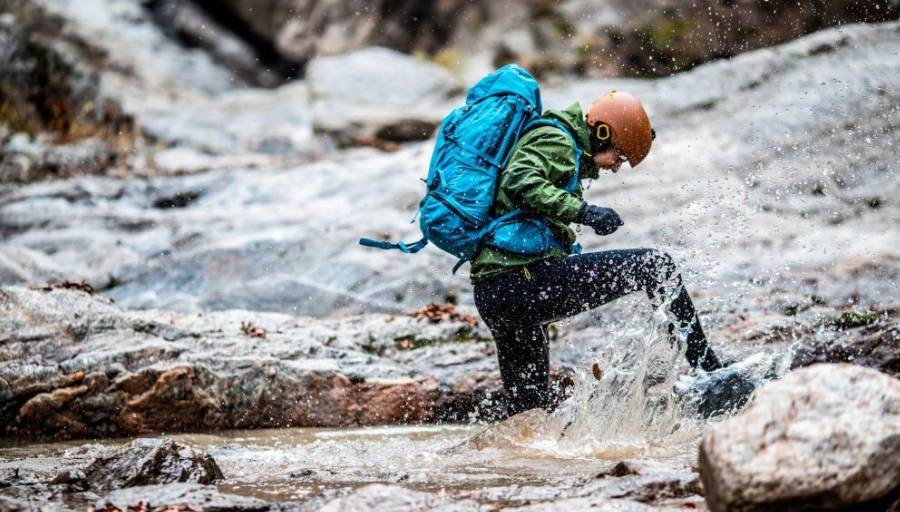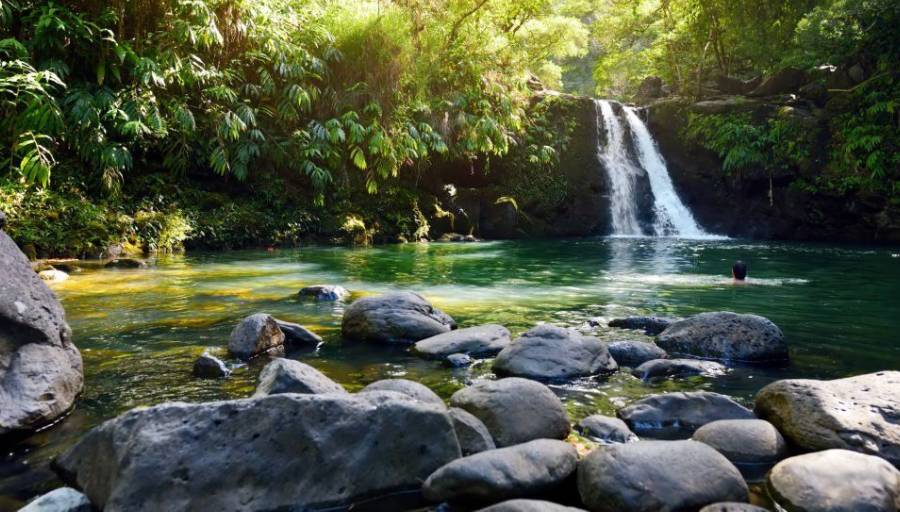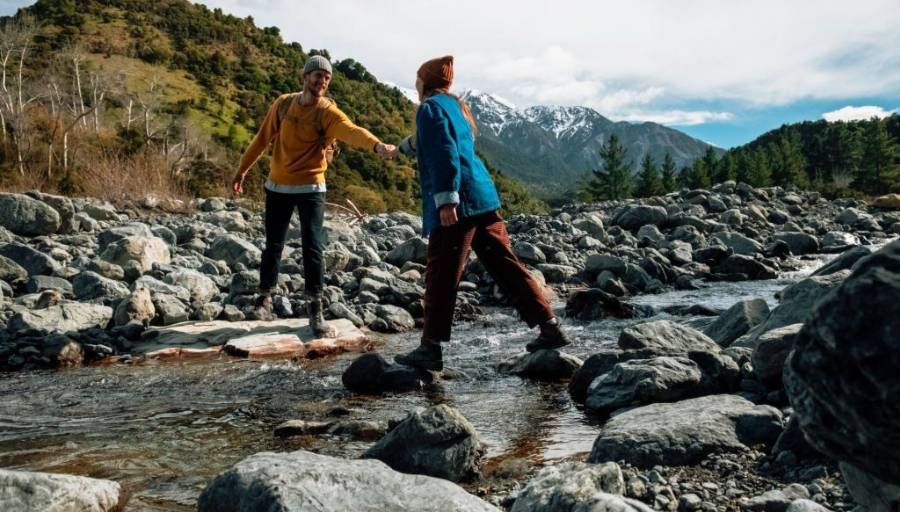
Rivers or streams during a trek or hike are common. It can seem exciting to have to cross a stream. However, it can be dangerous if precautions are not taken beforehand. Proper preparation and knowledge of different crossing methods are crucial for hikers, as misjudgments or lack of awareness can lead to accidents and injuries. For beginners, here is a guide on how to cross a river or stream while hiking.
Cross a River or Stream While Hiking – Smart Tips
Before even making a trek, you will have to think about the essentials to cross a river during a hike.
Check the Metrological Conditions
This is the key point to check. For flood level, weather, and storm potential while hiking, you will need to check that the conditions are optimal or at least good enough to cross a river safely. To do this, look at the weather forecast and inquire about the natural park through online resources.

Provide the Necessary Equipment
This is the basic, in addition to the classic hiking checklist, you will need to provide some special equipment such as:
- Walking Sticks: Use walking sticks to enhance stability while navigating the crossing. They provide extra support and help gauge the depth and stability of the riverbed.
- Waterproof Hiking Bag or Pouch: Carry a waterproof hiking bag or use a waterproof pouch to safeguard water-sensitive gear such as your phone or camera. This ensures essential equipment remains dry during the crossing.
- Hiking Shoes with a High Waterproof Index: Opt for hiking shoes with a reliable waterproof rating to minimize discomfort from wet shoes and socks. Alternatively, consider using water sandals instead of traditional footwear for the crossing.
- Shorts: Wearing shorts can prevent your pants from getting wet, offering a more comfortable experience during and after the river crossing.
Leave Early
Especially in the rainy season, it is advisable to take your walk in the morning. Indeed, there is more chance that the current is less powerful. Also, the chances of thunderstorms and higher water flows are more likely in the afternoon.

Take a Good Look at the River Before Crossing It
Once there, you will need to be observant in order to find the best place to cross the river.
Evaluate the Place Beforehand
To properly assess the location and find the best entry point:
- Observe Debris: Examine the surroundings for debris such as branches and driftwood. These can serve as indicators of a higher water level, giving you valuable information about the conditions you may encounter.
- Choose a Shallow Area: Prioritize entry points in shallow areas of the river. Shallow sections are generally safer to cross, reducing the risk of encountering strong currents or deep water.
- Select Wide River Sections: Opt for crossing at wider points in the river. Broader sections tend to have shallower waters, and the current is typically less powerful compared to narrower areas.
- Identify Potential Islands: Look for small islands or medians when the river branches. These central areas can serve as convenient rest points during the crossing, which provide temporary refuge and help break down the crossing into manageable segments.
Check Current
Once the potential crossing location has been found, it is always best to assess the current. To do this, throw a branch into the water and observe its speed and direction.
Find the Right Exit Point
Before even entering the water, it is best to have an idea of where to exit. Depending on the complexity of the crossing, this exit point may change. Nevertheless, it is better to have one or more options in mind in order to get out of the river quickly.
Loosen Your Backpack
To avoid any danger, it is recommended to loosen your bag before crossing a river on a hike. Indeed, in the event that you fall into the water, you can unload your bag so as not to be swept away in the current. Of course, this advice is primarily used in emergency situations.
The Guide for Crossing a River While Hiking
Once you have made your observation, it is finally time to start your crossing. Here are the essential points for crossing a watercourse in complete safety.
Fording
Crossing the bottom of the river is generally the safest and most recommended method. However, keep in mind that the bottom of a river is inherently unstable due to its compounds (sand, mud and silt). This composition can be slippery or act as a suction cup which could lead to falls.
It is therefore advisable to:
- Slowly slide his feet forward.
- Cross against the current and slightly diagonally.
- The use of walking sticks can add stability. Be careful when planting and removing them to avoid potential loss of balance.
- As a group, hold arms and walk in a coordinated fashion to add stability to your movements.
- If someone has more experience, they can cross first and then set up a rope so that other tour members can cross more safely.
Cross Over the Rocks
First of all, I would like to point out that:
- Going through the rocks is not the most recommended technique.
- The stones are often treacherous and can be slippery.
- In some cases, this technique remains the most feasible.
- Always evaluate other options before deciding on this one.
When the bed of a river is bordered by multiple rocks, crossing stone by stone can be envisaged. However, you will always have to check your support and above all not to jump.

In Case of Fast Water, Cross Diagonally
If you have no choice but to cross in a fast-flowing stream, do so slightly diagonally downriver but facing upstream. The best method then remains to lean slightly forward and walk like a crab, on the side.
What to Do in the Event of a Fall?
Above all, don’t panic. Start by removing your bag if it prevents you from getting up. In case the water flow takes you: Put your feet downhill to protect your head from any obstacles and get an overview of the situation. When you get to calm water, swim to shore.
Conclusion
Crossing a river can be dangerous. Waters that seem calm can have powerful currents, and shallow waters can hide their games. Always remember that safety should always come first. I hope these tips for crossing a river or stream have been useful to you. I wish you an excellent future hike!
Do not hesitate to read our article on How to Avoid Ticks and Lyme Disease While Hiking! Indeed, these can be useful to you, especially in the event of a group river crossing.
Frequently Asked Questions
Are water sandals better than waterproof hiking shoes for river crossings?
It depends on personal preference and the specific conditions. Water sandals can provide better water drainage, while waterproof hiking shoes offer protection against wetness. Choose based on the terrain and your comfort.
What should I do if I encounter a strong current while crossing a river?
If the current is too strong, reconsider the crossing. If you proceed, face upstream, maintain a stable stance, and use a walking stick for support. Always prioritize safety and consider alternative routes.
Should I remove my backpack before crossing a river?
It depends on the depth and current strength. In shallow and calm conditions, keeping your backpack on provides additional stability. In deeper or faster waters, removing it can prevent being weighed down and improve maneuverability.
What if I don’t have walking sticks?
While walking sticks enhance stability, you can still cross without them. Take slower and deliberate steps, maintain a wide stance, and use your arms for balance.